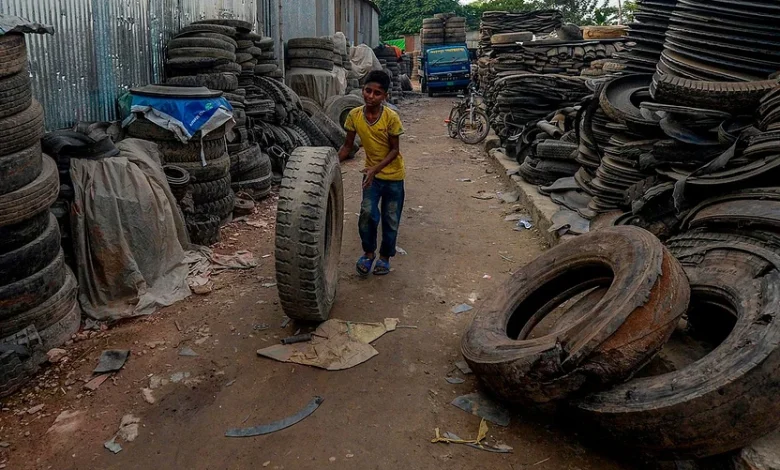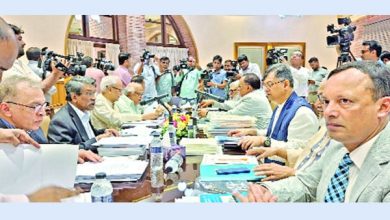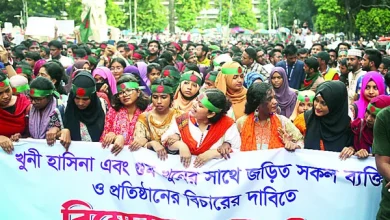Child labours suffer injuries at workplaces: World Day Against Child labour

The BBS, in its national child labour survey-2022, revealed that a total of 3.5 million children are engaged in labour, marking a 3 per cent increase from the 2013 survey
Shohagh, who is now at 14, used to work at a hardware factory in the capital’s Gandaria area. He suffered a serious injury three months ago when a large iron pin from a machine operated by a fellow child worker pierced his back. He underwent a surgery at the Dhaka Medical College Hospital.
His father, Sagar Mia, earns bread and butter for his family by driving an auto-rickshaw in Cumilla. He bore the entire treatment cost of Tk 25,000 during the four days of hospitalisation, but received no financial help from the factory owner.
Contacted, Md Russell, the factory owner, absolved himself of any responsibility for Shohagh’s injury claiming that he sustained injuries due to carelessness of his fellow worker.
In a similar incident, a 12-year-old teenage boy – Ibrahim – used to work as an assistant in a local construction site. He was forced to carry a heavy wheel of a mixture machine to a nearby garage. He could not bear the heavy weight and collapsed on the way before fainting.
The national child labour elimination policy–2010 prohibited appointing children in hazardous works, but its enforcement remains weak
After gaining sense during treatment at a hospital, he experienced no feelings in different body parts, which eventually led to paralysis.
Like the duo, there are numerous incidents across the country when child workers were pushed towards heavy tasks and subsequent injuries.
Against such a backdrop, Bangladesh, along with the world, is observing the world day against child labour, with the theme “Let’s act on our commitments: End child labour”.
According to a survey on street children by the Bangladesh Bureau of Statistics (BBS) and UNICEF in 2022, some 31 per cent of child workers suffer injuries while working, with 67 per cent sustaining cuts and wounds. They also endure neck, back, and waist pain, broken bones, burns, and beatings.
The Bangladesh Institute of Labour Studies (BILS) reported deaths of 20 child workers in 2023 due to violence at their workplaces.
Rising number of child labourers
The BBS, in its national child labour survey-2022, revealed that a total of 3.5 million children are engaged in labour, marking a 3 per cent increase from the 2013 survey.
Of them, around 1.7 million children are classified to be under child labour, with 1 million engaged in hazardous work, and the rest are permissible under different considerations.
The national child labour elimination policy–2010 prohibited appointing children in hazardous works, but its enforcement remains weak. Children aged between 12 and 17 are allowed to perform up to 42 hours of non-hazardous work a week.
However, any work by children aged 5 to 11, and more than 42 hours of work per week by children aged 5 to 17, will be regarded as hazardous child labour.
Lack of protection
There is an arrangement of financial aid for workers through the Bangladesh Sramik Kallyan Foundation, a welfare body for the workers, but it remains elusive for child workers due to legal constraints against child labour. The department of social services has grants for distressed children, not child workers.
However, these are not known to the masses due to lack of proper campaigns.
Ashraf Hossain, deputy secretary (women and child labour) of the ministry of labour and employment, said the authorities could not put an end to child labour due to the social contexts.
The government has launched a new Tk 25 billion scheme to prevent child labour, streamline the child workers, and facilitate technical education as well as other facilities for them.







